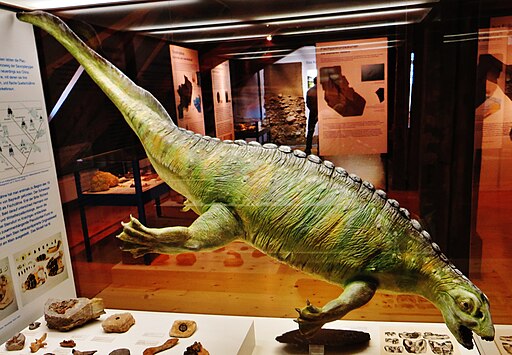The Shell-Crushing Reptile of the Triassic
Meet Placodus, a unique marine reptile from the Middle Triassic period, around 240 million years ago!

| Meaning | Flat tooth [Plac-odus] |
| Pronunciation | PLAK-oh-dus |
| When: | Middle Triassic (about 247–235 million years ago) |
| Where: | Europe (Germany, France, Switzerland, Poland) |
| What: | Sauropterygian marine reptile (Placodont) |
| Weight: | Estimated around 100–200 kg (220–440 pounds) |
| Length: | Approximately 2 meters (6.6 feet) |
| Diet: | Durophagous (ate shellfish and hard-shelled organisms) |
| Discovered: | First described by Georg Friedrich von Meyer in 1830 |
Placodus lived in shallow coastal waters and was part of a group of marine reptiles called placodonts.
It had a sturdy, barrel-shaped body, with strong limbs that were likely used for swimming and walking along the ocean floor.
Placodus had a short neck and a large head with broad, flat teeth that were perfect for crushing the hard shells of clams and other shellfish, which made up its diet.
Its strong jaws could easily crack open these tough shells to get to the soft meat inside.
Imagine Placodus gliding through ancient seas, using its powerful teeth to munch on shellfish.
